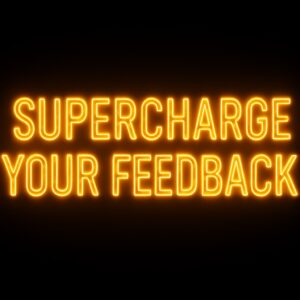Summary Insight:
If your company feels stuck, slow, or off-track, it’s not a people problem—it’s an alignment problem. This article shows you how to fix it fast, before the crash.
Key Takeaways:
- Misalignment kills execution—fix it before it shows up in profits, morale, or momentum.
- Alignment across strategy, structure, process, and people drives fast, sustained growth.
- A 6-phase alignment process builds clarity, buy-in, and a culture that moves as one.
In 1993 I was a college student in St. Paul, Minnesota. I drove a twenty-year-old canary yellow Toyota Corolla with bald tires, a broken heater, and a misaligned chassis. Because my spending priorities then were the necessities of college life (pizza, beer, girls, and rent), I never invested in making the car safe to drive.
Navigating that car on the icy roads of thirty-below Minnesota winters required a certain ability to go with the flow. But eventually, my refusal to to replace the tires and align the chassis caught up with me. Driving late one winter night … it’s easy to guess what happened. Wipe out. Crash. Car totaled.
Thankfully, no one was hurt.
I share this story because it’s easy to tell when a car is misaligned. The car squeaks, there’s friction and a loss of power, and it’s difficult to steer where you want to go. Similarly, if you know what to look for, it’s easy to tell when your business is misaligned. If you act early on, you can avoid a crash and even improve performance fast.
What It Means to Have an Aligned Organization
 Well after I had sold that old Toyota, I received some more equally important lessons on the value of organizational alignment. In my late twenties to mid-thirties, I personally led two companies into compound annual growth rates (CAGR) exceeding 5,0000% per year. From startup to $4M and $12M in two and four years respectively. While this may be chump change to some entrepreneurs, these periods of rapid growth were priceless learning for me. They also provide a valuable lesson that’s applicable to companies of all sizes and at all lifecycle stages.
Well after I had sold that old Toyota, I received some more equally important lessons on the value of organizational alignment. In my late twenties to mid-thirties, I personally led two companies into compound annual growth rates (CAGR) exceeding 5,0000% per year. From startup to $4M and $12M in two and four years respectively. While this may be chump change to some entrepreneurs, these periods of rapid growth were priceless learning for me. They also provide a valuable lesson that’s applicable to companies of all sizes and at all lifecycle stages.
The surprising thing is that, in order to get that kind of exponential growth, I didn’t have to fight, cajole, or struggle for years. Instead, the leadership team and I created the right internal and external alignment for growth to occur. Because we got the alignment right, the businesses executed extremely fast. The same lesson holds true for you. If you can get the internal and external alignment right for your business, you’ll dramatically increase its probability of thriving and executing very quickly. I’m not guaranteeing 5,000% CAGR. In fact, I’m not even recommending you try for that — it’s much wiser to shoot for more sustainable rates of growth. But the act of creating alignment is essential to every business. Get it right and your company can execute swiftly and powerfully. Get it wrong and you won’t get back on the growth curve until you do get it right. Alignment is the key.
At the most basic level, “external alignment” means that the company’s unique capabilities are well integrated with growing market opportunities. Basically, the company is in the right place, at the right time, with the right set of capabilities, and “pulled” forward by growing market demand. “Internal alignment” means that the collective organizational mass is headed in the right direction and there’s little internal friction stopping the work from getting done. If external alignment is the train engine that powers growth, then internal alignment are the passenger cars being pulled forward. Your goal is to have a powerful engine with smoothly running cars.
When all of the elements of external and internal alignment come together, you’re going to have a very high probability of catching a fantastic growth wave. Intuitively, this should make a lot of sense. Envision a company with the right strategy and business model for the current market conditions. The core team shares the same vision and values. They all want to end up in the same destination and have the same boundaries on what is and isn’t acceptable behavior. There’s a structure in place that assigns authority and accountability for the work that needs to get done. The team has a sound process to consistently make good decisions and implement them fast. And talented, passionate people are flocking to the organization because they sense an opportunity and are intrinsically motivated by the work that needs to be done. If you had all these things, how could you not be successful?
The Early Signs of Misalignment
 Unlike a cheap car, you can’t afford to crash your business into a wall. Don’t wait to realign your company once sales are falling and the market has shifted. You want to be well ahead of that curve. If you’re wise, you’ll pay attention to the early signs of misalignment, and take action immediately to address them. You’ll recognize when it’s time to realign the organization when the company isn’t executing as fast as it needs to. Symptoms may include:
Unlike a cheap car, you can’t afford to crash your business into a wall. Don’t wait to realign your company once sales are falling and the market has shifted. You want to be well ahead of that curve. If you’re wise, you’ll pay attention to the early signs of misalignment, and take action immediately to address them. You’ll recognize when it’s time to realign the organization when the company isn’t executing as fast as it needs to. Symptoms may include:
- The Founder’s Trap – the company can’t seem to scale beyond the founder, resulting in a bottleneck to growth and execution
- Incomplete priorities – the company can’t say “no” to various opportunities and therefore isn’t committed to a clear and purposeful strategy
- Amnesia – the company seems to have forgotten what it really is and why it’s really in business
- Internal friction – the company takes too much energy and effort to make simple decisions and get work done
- Cash crunch – the company has sales but no profits
- Loss of innovation – the company no longer innovates but acquires growth by buying other companies
- Poor team performance – the team isn’t stepping up to the size of the opportunity
How to Align Your Organization
 Aligning your organization isn’t something you draw up in isolation and then announce to the team. The greatest plan in the world is only as good at the team-wide commitment to implementing it. You’ll need to follow all the steps of a sound decision-making and implementation process and involve those with authority, power, and influence in the alignment process itself. This usually amounts to you and your core leadership team (5 to 15 people on average) going through the process together. Here’s the 6-Phase process I’ve found most effective in aligning organizations for improved performance. In my experience, depending on the size and complexity of the business, it takes anywhere from one to three months to complete Phases 1 to 5, and double that time to fully integrate those changes in the culture and optimize performance in Phase 6.
Aligning your organization isn’t something you draw up in isolation and then announce to the team. The greatest plan in the world is only as good at the team-wide commitment to implementing it. You’ll need to follow all the steps of a sound decision-making and implementation process and involve those with authority, power, and influence in the alignment process itself. This usually amounts to you and your core leadership team (5 to 15 people on average) going through the process together. Here’s the 6-Phase process I’ve found most effective in aligning organizations for improved performance. In my experience, depending on the size and complexity of the business, it takes anywhere from one to three months to complete Phases 1 to 5, and double that time to fully integrate those changes in the culture and optimize performance in Phase 6.
Phase 1: Aligning the Strategy
The main thing to keep in mind when it comes to aligning or realigning the organization is that, no matter how bad things may be in the current environment, the organization will still naturally resist any change. So your first step is always to unfreeze, unlock, or drain away any resistance to change. My favorite method for doing this is to get the leadership team off site for 1.5 days and, as part of a strategy session, take a holistic view of the organization. We look at where it currently is on its strategic roadmap, as well as any sources of entropy (friction and potential improvement areas) impacting execution. With a shared recognition of what’s really happening versus what should be happening, the leadership team gets on the same page and commits to finding solutions. The desired outcome from the strategy session is group clarity and commitment to the chosen growth strategy; shared recognition of the 3-5 key burning balls or obstacles and an action plan to address them; greater appreciation for individual management styles and perspectives among the team; and recognition of key issues affecting team performance and how to address them. Armed with this information, awareness, and buy-in, you’re ready for Phase 2.
Phase 2: Aligning the Organizational Structure
The purpose of this stage is to create leadership team recognition and buy-in for the right organizational design to support the chosen growth strategy. Like the stage before it, this stage is best conducted off site with the leadership team and, if done well, takes 1 day to complete. The desired outcome should be group recognition and buy-in for: 1) the role requirements and key performance indicators (KPIs) for each business function; 2) the individuals who will perform each role; 3) the talent gaps in the structure; and 4) the new hire priority sequence. The result is a new organizational structure that best supports the company’s growth strategy.
Phase 3: Aligning the Organizational Management Process
This part of the process doesn’t need to be conducted off site. Instead, it’s really a matter of taking the outcomes (the strategy, KPI’s, and short-range and mid-range goals gathered from the prior two phases) and ensuring that the management team is executing towards them with little hindrance. This usually requires a period of time to gather up the right metrics and to make them easy to report on and measure. It also requires spending some extra time with members of the leadership team to ensure they fully understand and are performing in their new roles. At the same time, the goals for longer-range business development need to be managed and tracked through a separate process. Basically, there’s one process to execute on short-range tasks (which is handled during weekly Leadership Team meetings) and one process to execute on long-range business development (which is handled by a Company Council). In other words, don’t attempt to manage long-range goals in a short-range setting. The combined result is better team-wide decision making, an improved capacity to prioritize in the face of change, and more rapid implementations.
Phase 4: Aligning Budgets, Targets, and Rewards
Phase 4 really goes hand in hand with Phase 3. Based on the new strategy, structure, and roles, you’re working with the leadership team to identify the budget and annual, quarterly, and monthly financial and operational targets for the business. The result is greater clarity and incentives for the entire organization, as well as a methodology to track financial and operational performance.
Phase 5: Aligning the Vision, Values, and People
While the the prior phases equip the senior leadership team for success, this phase integrates that groundwork throughout the rest of the organization. You accomplish this by collaborating with the leadership team to help cascade the strategy, vision, values, roles, and expectations down to the rest of the company. The desired outcome is a shared understanding of everyone’s role in shaping the company’s success, vision, and values. The result is a strong organizational culture that supports overall momentum and accomplishment.
Phase 6: Optimization
From here on, until it’s time to realign the organization again, it’s a matter of optimizing overall company performance. The not-so-ironic thing is that, because you’ve invested the time and energy in getting the alignment right, you don’t have to optimize much at all. The ball starts rolling downhill under its own inertia. The outcome is a higher performing, more resilient organization that executes powerfully on its chosen growth strategy.
Summary
To get the most out of your team and create a culture of high performance, focus your efforts on aligning the organization for success. Alignment includes 1) Strategy, or making sure that the company is meeting the needs of its customers, now and over time; 2) Vision and Values, or making sure that people have bought into a common destination and shared modes of acceptable behavior; 3) Structure, or getting the organizational design right so that there is authority and accountability for key functions and the business can scale; 4) Process, or putting in place a method for making good decisions and implementing them fast; and 5) People, or attracting and cultivating talented employees who are a good fit and are intrinsically motivated to do the work that needs to get done. It takes tremendous energy and focus to get alignment – but when you finally get it right, your organization will execute very fast indeed!




